Keyboard mapping allows the user to assign alternate text to be sent in response to any key or key combination. AbsoluteTelnet users can redefine a key to send a single keystroke, escape sequence, or run an entire script.
The keyboard mapping functionality can be accessed through the “Edit Keymap” button on the Options->Properties->VT Options menu option.
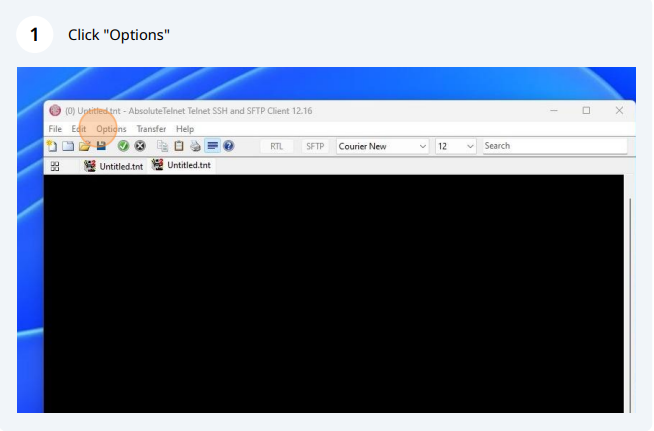
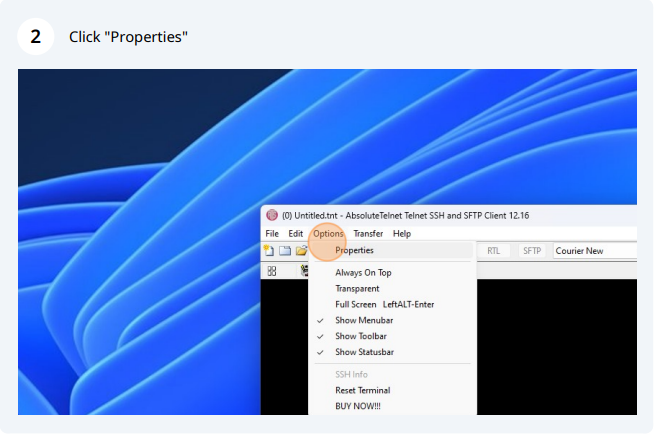
Pressing the button brings up the keymap manager. Keyboard maps are stored for each Connection File inside of the connection file itself. This allows you to store different keymaps for each of your hosts.
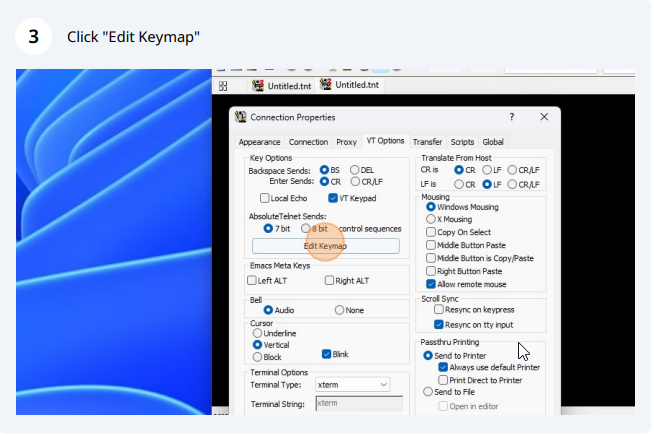
The keymap manager will display any existing mapped keys and allows you to add, modify, or delete key mappings. To add a new mapping, click the add button. You will be presented with the following dialog.
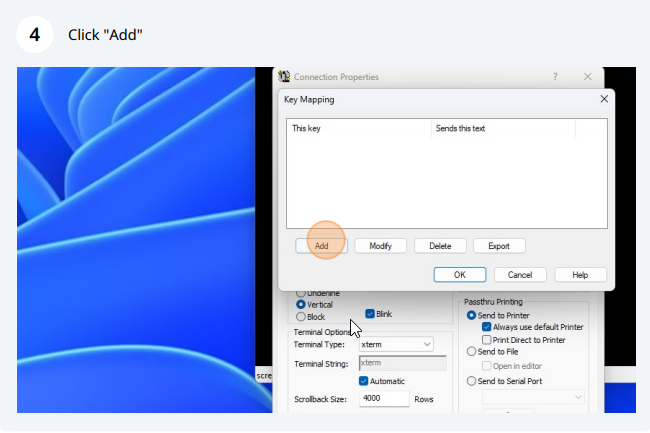
Now, press any key combination that you want to re-map. Any combination of keys using control, shift, and alt can be used.
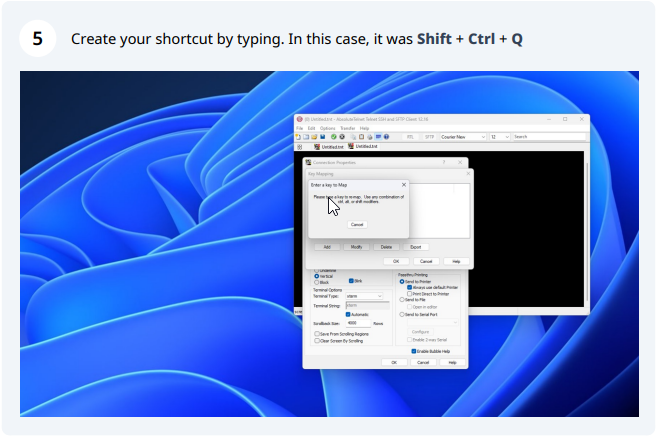
Now you can define the new text for the key. This text can be either a single character or multiple characters. To configure the mapping to send characters that are not normally printable, use the following syntax for the unprintable character:
\x??
where ?? is the HEX value for the character to be sent.
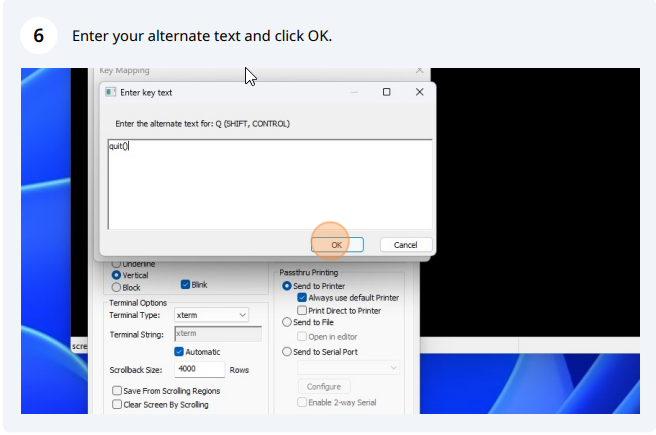
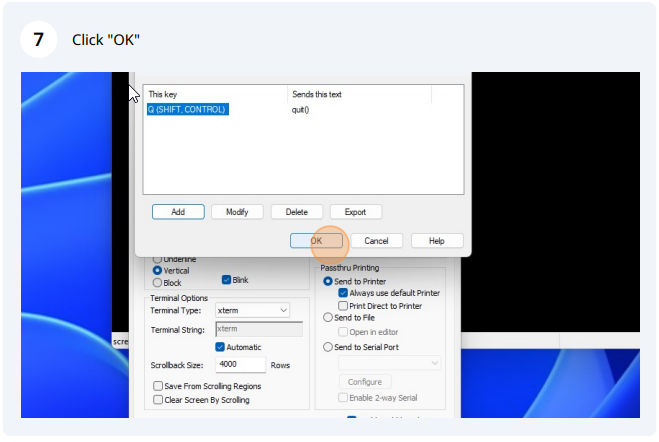
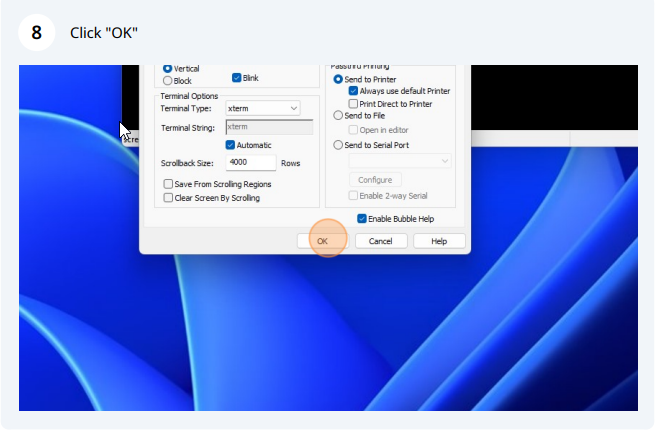
Additionally, you can use the following pre-defined text strings to map existing commands in AbsoluteTelnet
| Command Text | Command Description |
| CMD-copy | map a key to the ‘Edit->Copy’ menu command (normally ctrl-ins) |
| CMD-paste | map a key to the ‘Edit->Paste’ menu command (normally shift-ins) |
| CMD-newwindow | map a key to the ‘File->New->Window’ menu command (normally alt-n) |
| CMD-togglepassdest | hese commands allow you to redefine the control keys that operate the scrollbar. Normally, holding ctrl in combination with the page-up, page-down, end, home, left, up, right, and down arrows will allow you to move around the scrollback buffer using the keyboard instead of the mouse. If you want to redefine this functionality, you can with keymapping. For example, by mapping the ctrl-alt-f10 key to the text ‘CMD-scrolldownpage’, you now have a new keyboard shortcut to scroll down a page of the scrollback. |
| CMD-insert CMD-delete CMD-pageup CMD-pagedown CMD-end CMD-home CMD-arrowleft CMD-arrowup CMD-arrowright CMD-arrowdown | Map a key to one of the terminal specific terminal commands. It is important to note that not all commands are defined for each terminal type. The commands send a terminal specific control sequence from the client to the host. For example, CMD-insert sends ‘CSI 2 ~ ‘ in xterm mode, but ‘ESC @’ in ansi mode and remains undefined in VT52 mode. |
| CMD-scrolluppage CMD-scrolldownpage CMD-scrollend CMD-scrollhome CMD-scrollleft CMD-scrollup CMD-scrollright CMD-scrolldown | These commands allow you to redefine the control keys that operate the scrollbar. Normally, holding ctrl in combination with the page-up, page-down, end, home, left, up, right, and down arrows will allow you to move around the scrollback buffer using the keyboard instead of the mouse. If you want to redefine this functionality, you can with keymapping. For example, by mapping the ctrl-alt-f10 key to the text ‘CMD-scrolldownpage’, you now have a new keyboard shortcut to scroll down a page of the scrollback. |
| CMD-PF1 CMD-PF2 CMD-PF3 CMD-PF4 CMD-keypad0 CMD-keypad1 CMD-keypad2 CMD-keypad3 CMD-keypad4 CMD-keypad5 CMD-keypad6 CMD-keypad7 CMD-keypad8 CMD-keypad9 CMD-keypadenter CMD-keypadplus CMD-keypadcomma CMD-keypaddecimal | These commands will cause the terminal to send the default escape sequences used by the VT keypad. The keypad has two modes, ‘numeric’, and ‘applicaton’, and the escape sequences will vary depending on the mode the keypad is in. Of course, users don’t normally specify the keypad mode directly. It is something that is specified by the host. For example, CMD-keypad6 will send a 6 in numeric mode, but ‘ESC O v’ in application mode. |